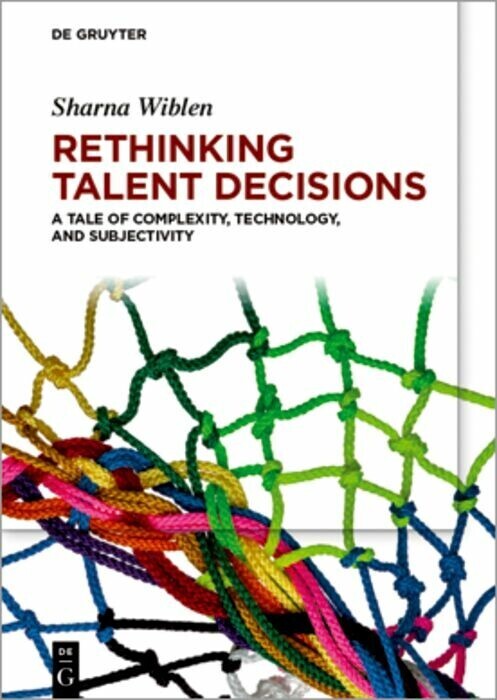Scenario-based Strategic Planning
Developing Strategies in an Uncertain World
In a world characterized by increasing complexity and volatility, managers must be able to flexibly adapt their strategies to changing environmental conditions. Traditional strategic management frameworks often fail in this context. Therefore, we present 'scenario-based strategic planning' as a framework for strategic management in an uncertain world.
Previous approaches to scenario planning were complex and focused on the long term, but the approach developed by Roland Berger and the Center for Strategy and Scenario Planning at HHL Leipzig Graduate School of Management is different. By designing appropriate tools and integrating scenario planning into strategic planning, we have made our approach less complex and easier for firms to apply. We illustrate the approach with examples from different industries.
Prof. Dr. Burkhard Schwenker is CEO of Roland Berger Strategy Consultants and Chairman of Roland Berger School of Strategy and Economics. Prof. Dr. Torsten Wulf is Professor of Strategic and International Management at Philipps-University Marburg. Both are Academic Directors of the Center for Strategy and Scenario Planning at HHL Leipzig Graduate School of Management.
Previous approaches to scenario planning were complex and focused on the long term, but the approach developed by Roland Berger and the Center for Strategy and Scenario Planning at HHL Leipzig Graduate School of Management is different. By designing appropriate tools and integrating scenario planning into strategic planning, we have made our approach less complex and easier for firms to apply. We illustrate the approach with examples from different industries.
Prof. Dr. Burkhard Schwenker is CEO of Roland Berger Strategy Consultants and Chairman of Roland Berger School of Strategy and Economics. Prof. Dr. Torsten Wulf is Professor of Strategic and International Management at Philipps-University Marburg. Both are Academic Directors of the Center for Strategy and Scenario Planning at HHL Leipzig Graduate School of Management.
1;CONTENTS;7 2;1. Introduction;10 2.1;1.1 AN UNCERTAIN WORLD;11 2.2;1.2 SCENARIO-BASED STRATEGIC PLANNING;13 2.3;1.3 THE GOAL OF THIS BOOK;14 2.4;1.4 REFERENCES;16 3;2. The challenges of strategic management in the twenty-first century;18 3.1;2.1 DETERMINANTS OF ENVIRONMENTAL UNCERTAINTY;19 3.1.1;2.1.1 VOLATILITY;21 3.1.2;2.1.2 COMPLEXITY;23 3.1.3;2.1.3 AMBIGUITY;26 3.2;2.2 THE EVOLUTION OF STRATEGIC PLANNING;27 3.2.1;2.2.1 THE GOLDEN AGE OF STRATEGIC PLANNING;27 3.2.2;2.2.2 THE STRATEGIC PROCESS ERA;29 3.2.3;2.2.3 THE MULTI-PERSPECTIVE VIEW;31 3.3;2.3 TECHNIQUES OF PREDICTING THE FUTURE;33 3.4;2.4 CONCLUSIONS;35 3.5;2.5 REFERENCES;35 4;3. Scenario-based strategic planning: A new approach to coping with uncertainty;39 4.1;3.1 INTRODUCTION;40 4.2;3.2 SCENARIO PLANNING - THE BASIS FOR MODERN STRATEGIC PLANNING;42 4.3;3.3 DESIGNING A SCENARIO-BASED APPROACH TO STRATEGIC PLANNING;45 4.3.1;3.3.1 OVERVIEW;45 4.3.2;3.3.2 INTEGRATING THE APPROACH INTO THE STRATEGIC PLANNINGPROCESS;59 4.4;3.4 CONCLUSION;60 4.5;3.5 REFERENCES;60 5;4. Six tools for scenario-based strategic planning and their application;63 5.1;4.1 INTRODUCING TOOLS ONE AND TWO: THE FRAMING CHECKLIST AND 360° STAKEHOLDER FEEDBACK;64 5.1.1;4.1.1 THE FRAMING CHECKLIST;64 5.1.2;4.1.2 DESCRIPTION OF THE FRAMING CHECKLIST;66 5.1.3;4.1.3 360° STAKEHOLDER FEEDBACK;72 5.1.4;4.1.4 EVALUATION OF THE FRAMING CHECKLIST AND 360° STAKEHOLDERFEEDBACK;79 5.2;4.2 APPLYING FRAMEWORKS ONE AND TWO: THE FRAMING CHECKLIST AND 360° STAKEHOLDER FEEDBACK IN THE EUROPEAN AIRLINE INDUSTRY;82 5.2.1;4.2.1 INTRODUCTION;82 5.2.2;4.2.2 THE FRAMING CHECKLIST;83 5.2.3;4.2.3 360° STAKEHOLDER FEEDBACK;84 5.3;4.3 INTRODUCING TOOLS THREE AND FOUR: THE IMPACT/UNCERTAINTY GRID AND THE SCENARIO MATRIX;90 5.3.1;4.3.1 THE IMPACT/UNCERTAINTY GRID;90 5.3.2;4.3.2 DESCRIPTION OF THE IMPACT/UNCERTAINTY GRID;92 5.3.3;4.3.3 THE SCENARIO MATRIX;94 5.3.4;4.3.4 DESCRIPTION OF THE SCENARIO MATRIX;99 5.3.5;4.3.5 EVALUATING THE IMPACT/UNCERTAINTY GRID AND THESCENARIO MATRIX;104 5.4;4.4 APPLYING FRAMEWORKS THREE AND FOUR: THE IMPACT/UNCERTAINTY GRID AND THE SCENARIO MATRIX IN THE EUROPEAN AIR-LINE INDUSTRY;106 5.4.1;4.4.1 INTRODUCTION;106 5.4.2;4.4.2 THE IMPACT/UNCERTAINTY GRID;106 5.4.3;4.4.3 THE SCENARIO MATRIX;108 5.5;4.5 INTRODUCING TOOLS FIVE AND SIX: THE STRATEGY MANUAL AND THE MONITORING COCKPIT;124 5.5.1;4.5.1 INTRODUCTION;124 5.5.2;4.5.2 THE STRATEGY MANUAL;124 5.5.3;4.5.3 DESCRIPTION OF THE STRATEGY MANUAL;128 5.5.4;4.5.4 THE SCENARIO COCKPIT;131 5.5.5;4.5.5 DESCRIPTION OF THE SCENARIO COCKPIT;133 5.5.6;4.5.6 EVALUATING THE STRATEGY MANUAL AND THE SCENARIOCOCKPIT;136 5.6;4.6 APPLYING FRAMEWORKS FIVE AND SIX: THE STRATEGY MANUAL AND THE SCENARIO COCKPIT IN THE EUROPEAN AIRLINE INDUSTRY;138 5.6.1;4.6.1 THE STRATEGY MANUAL;138 5.6.2;4.6.2 THE SCENARIO COCKPIT;141 5.7;4.7 REFERENCES;144 6;5. Scenario-based strategic planning;147 6.1;5.1 INTRODUCTION;148 6.2;5.2 CHALLENGE AND OBJECTIVES;149 6.3;5.3 METHODOLOGY/APPROACH;149 6.3.1;5.3.1 IDENTIFYING AND RATING INFLUENCING FACTORS;150 6.3.2;5.3.2 BUILDING SCENARIOS;152 6.3.3;5.3.3 FOUR SCENARIOS FOR GLOBAL MANUFACTURINGINDUSTRY;153 6.3.4;5.3.4 IDENTIFYING OPPORTUNITIES AND BUILDING BUSINESSCASES;161 6.4;5.4 BEST PRACTICES;163 6.5;5.5 CONCLUSIONS;164 7;6. The benefits of scenario-based planning;165 7.1;6.1 INTRODUCTION;166 7.2;6.2 DECISION-MAKING COMPREHENSIVENESS AND SPEED;169 7.2.1;6.2.1 DECISION MAKING COMPREHENSIVENESS;169 7.2.2;6.2.2 DECISION SPEED;171 7.3;6.3 COGNITIVE BIASES;172 7.4;6.4 AN INTEGRATIVE MODEL OF DECISION QUALITY;175 7.5;6.5 SCENARIO-BASED STRATEGIC PLANNING;176 7.6;6.6 CONCLUSION;180 7.7;6.7 REFERENCES;181 8;7. The benefits of scenario-based planning;186 8.1;7.1 INTRODUCTION;187 8.2;7.2 STRATEGIC FLEXIBILITY - OPENING THE DOOR TO A CHANGE OF STRATEGY;188 8.3;7.3 OBSTACLES TO STRATEGIC FLEXIBILITY;191 8.4;7.4 PRACTICAL APPLICATION;193 8.5;7.5 SCENARIO-BASED PLANNING AS A TOOL TO CRAFT STRATEGIC FLEXIBILITY;196 8.6;7.6 REFERENCES;199 9;8. Conclusion - Good m
Schwenker, Burkhard
Wulf, Torsten
Krys, Christian
| ISBN | 9783658028756 |
|---|---|
| Artikelnummer | 9783658028756 |
| Medientyp | E-Book - PDF |
| Auflage | 2. Aufl. |
| Copyrightjahr | 2013 |
| Verlag | Springer Gabler |
| Umfang | 219 Seiten |
| Sprache | Englisch |
| Kopierschutz | Adobe DRM |











